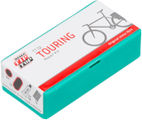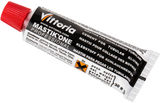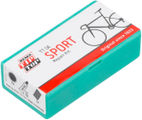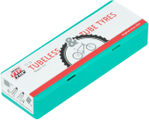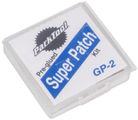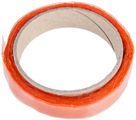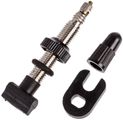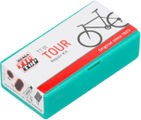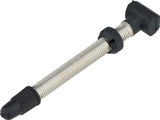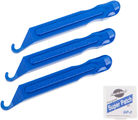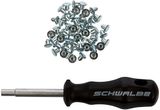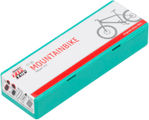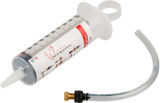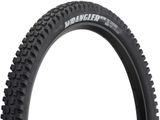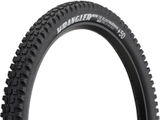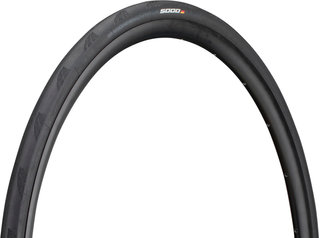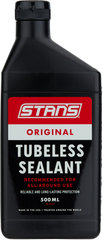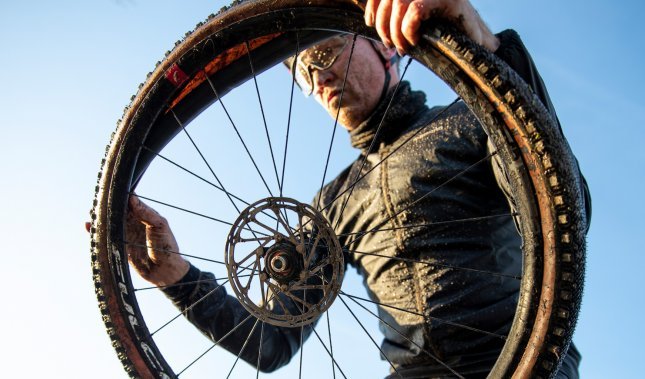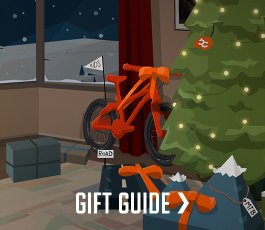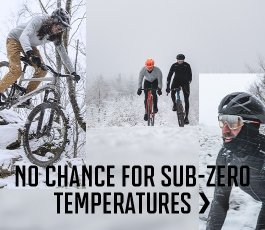Tyres
The tyres influence the handling of your bike like no other component. On the one hand, this concerns their air pressure and condition - and on the other, their design, i.e. profile and width. That's why tyres are so extremely different for different types of bikes.Read More HereOUR Tyres RECOMMANDATIONS
Our Suggestions
Bicycle tyres
The tyres influence the handling of your bike like no other component. On the one hand, this concerns their air pressure and condition - and on the other, their design, i.e. profile and width. That's why tyres are so extremely different for different types of bikes. Road bike tyres are narrow, light, and smooth ("slicks"), city bike tyres tend to be puncture-proof all-round talents and mountain bike tyres are true specialists for traction, dirt and wet corners. In between, depending on preferences, there are tyres for city and touring bikes as well as gravel bikes. And precisely because you can turn your "old" bike into a completely new one with new tyres, we encourage you to change your tyres in good time and have fun trying out different ones. We make sure that you always get a wide selection at great prices in our shop. Read on below to find out what you should keep in mind when buying tyres!
Sizes and dimensions
To ensure that new tyres fit your bike, the wheel size in inches is the most important factor. Touring bikes and road bikes usually roll on 28-inch wheels, mountain and gravel bikes are available with 27.5-inch and 28-inch wheels - or 29-inch for MTBs, but these are just thicker tyres on 28-inch rims. Folding bikes need 16-20 inches and children's bikes between twelve and 26 inches. The tyre width is also important. It’s either indicated in millimetres or in inches - simply because it's a tradition: MTB tyre widths are measured in inches (27.5 x 2.4") and road bike tyre widths in metric sizes (700-30C). All tyres can be compared using the ETRTO (European Tyre and Rim Technical Organisation) specification, which standardises the tyre width and inner diameter. For the above examples, this would be 62-584 (MTB) and 30-622 (road bike).
Tyre structure
Your tyres are made up of three components: The carcass is the supporting structure, so to speak. Its unit of measurement TPI (threads per inch) indicates how many threads per inch have been processed. The tyre bead keeps the tyre firmly on the rim: Inexpensive tyres have a metal core (clincher tyres), more expensive tyres have a Kevlar core (folding tyres) - you can choose between the two under "type". The tread (and its rubber compound) determines how well a tyre rolls, how much traction it has and how quickly it wears out.
Tyres for MTB
Mountain bike tyres can differ greatly depending on the application. That's why you can select Cross Country, All Mountain, Enduro, Downhill and Dirtjump/Slopestyle in our shop. In addition to different sizes (26, 27.5 and 29 inches), there is a full range of profile types, rubber compounds and weights - many models are available in different versions. Most MTB tyres today are tubeless-compatible and all can be fitted with additional puncture protection (so-called inserts). You can find more information about MTB tyres here.
Road bike, gravel bike and cyclocross tyres
A lot has happened in terms of the width of road bike tyres in recent years. Fuelled by the gravel bike boom, there is now a wide variety - from narrow high-pressure tyres for the track, all-rounders for touring or comfort models that are also fun off-road, to cyclocross tyres for all conditions.
Puncture protection when travelling and in the city
On city bikes and when travelling, the main thing most cyclists don't want is a flat tyre. That's why they are happy to accept a little more weight - for example through puncture protection layers. Certain tyres are also known for their durability. Also take a look at all-season tyres and special tyres for cargo bikes!
E-bike tyres
In principle, you can choose the tyres for your e-bike just as freely as for a non-motorised bike. Only S-Pedelec tyres must be approved for this type of vehicle - and have a size that is listed in the documents. The easiest way is to click on "E-Bike Ready" in the filter, then you can see at a glance which tyres are suitable for 25 km/h and 45 km/h e-bikes.
Winter tyres
It is always smart to use different tyres in winter than in summer. Roads are often wet and sometimes slippery - that’s why there are winter tyres designed for this. And spikes are also permitted on bikes, as they give you traction even on bare ice. For road bikes and mountain bikes, there are rubber compounds that work better in cold temperatures than others.
Indoor training
If you keep your fitness level high on the indoor trainer in winter, you may need a special tyre for the trainer, as it is quieter and does not wear out as quickly. Simply select "Turbo trainer" as the application, and you will be presented with the right selection!
Accessories and small parts
Of course, we also offer you every conceivable accessory for tyres and changing tyres. From inner tubes to repair kits, rim tape, puncture protection inserts, tubeless valves, sealant and smart air pressure sensors to pumps of all kinds, you'll find everything you're looking for in our shop - even tubular tyre adhesive.
